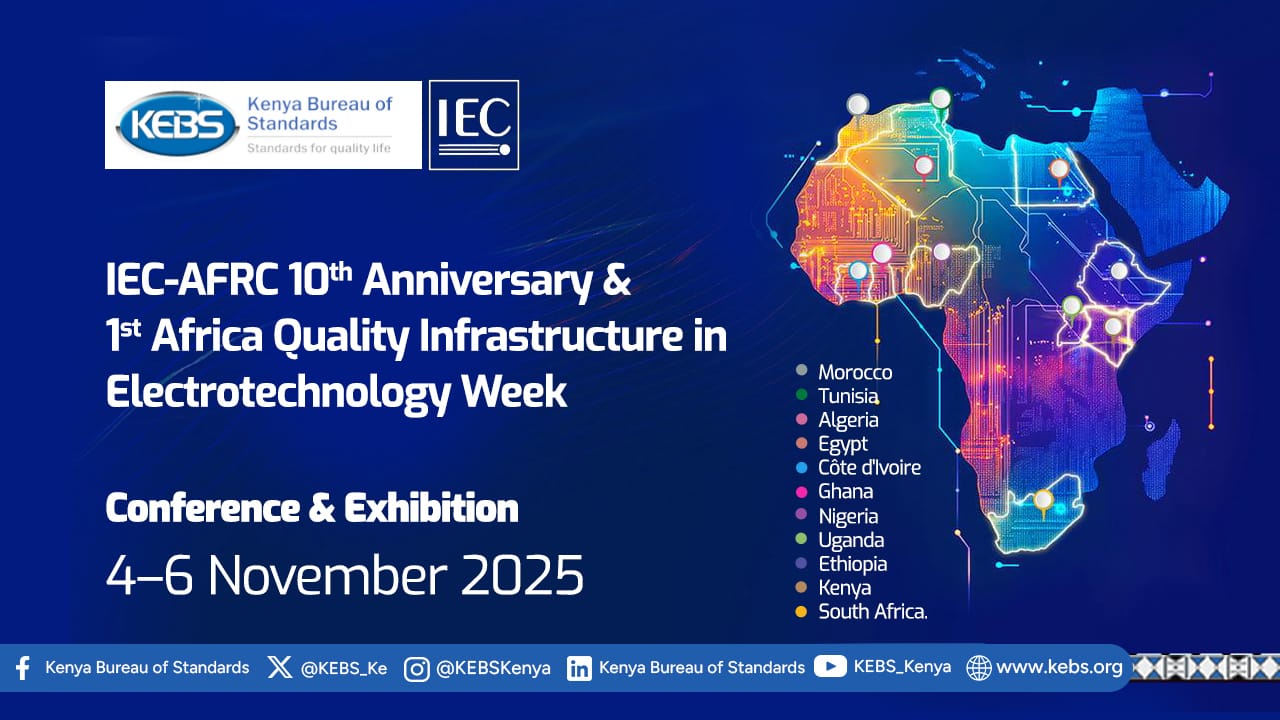- The 254 Report
- Posts
- IEC-AFRC 10 Years Anniversary and 1st IEC Africa Quality Infrastructure in Electrotechnology
IEC-AFRC 10 Years Anniversary and 1st IEC Africa Quality Infrastructure in Electrotechnology
How Engineers Are Shaping Africa's Standards Future

When engineers face obstacles, they don't just complain. They identify the root causes, collaborate across borders, and engineer solutions. That's exactly what happened at the IEC-AFRC 10th Anniversary workshop in Nairobi on November 5, 2025, where technical professionals shared a common frustration: the complexity of standards work is slowing down Africa's progress.
The Problem: An Engineer's Daily Nightmare
Picture this: You work for an extra-hygienic test center in Kenya. To run a single compliance test, you need to consult five different standards. Five. Each one tells you something slightly different, some contradicting others. When you try to harmonize testing across regions, say temperature requirements of -40 degrees Celsius, you hit a wall. Nobody has reached that specification.
This isn't unique to Kenya. Engineers across Africa face the same struggle:
No system integration, no harmonization, no real coordination.
The human cost is real too. National standardization committees are supposed to have 10 experts attending meetings, but only 2 show up. Why? Infrastructure challenges make it hard to reach remote areas, awareness is low, and frankly, experts don't see the immediate value.
Why Engineers Matter in This Equation
Engineers aren't passive recipients of standards. They're the ones who must live with them every single day. One Kenyan engineer working for a technical services company expressed it perfectly: He's keen to participate in standards development, but when the barriers are too high, even his enthusiasm can't overcome them.
This engineer represents thousands across Africa. They want better standards. They're willing to work toward them. But the system isn't meeting them halfway.
The Engineering Solution: Make It Simple
Here's what's beautiful about how engineers think: They don't just complain about complexity. They propose user-centered design principles to fix it.
The SMART Approach
The IEC/ISO SMART Standards Initiative is built on the principle that standards should work for people, not the other way around. Think about a hotel safe: you enter your PIN and press hash. That's it. No manual needed.
Engineers proposed applying this same logic to standards:
Modular design: Break complex standards into simpler, reusable components instead of forcing users to navigate five standards.
Clear, accessible tools: Demo versions and library resources so engineers can test-drive standards before full implementation.
One-click awareness: Use social media, webinars, LinkedIn, and professional networks, reaching engineers where they already spend their time.
Quick support: Have someone who can answer your question when you're stuck at 3 PM on a Friday before a Monday deadline.
Continuous Learning Through Trainers
Engineers also emphasized the training-of-trainers model. If you train the right people, the technical leaders, the department heads, they'll multiply that knowledge across their entire organizations. One well-trained trainer can reach 50 people. One of those 50 becomes another trainer. Exponential growth.
Real-World Collaboration: The Sweden-Africa Connection
When Martin Lind from Svensk Elstandard heard the African engineers' concerns, he made an important observation: The problems you're describing aren't unique to Africa. They're universal. But your solutions are.
African workshops had generated ideas about harmonization, system integration, and collaborative participation that hadn't emerged from similar workshops in Europe or North America.
His takeaway for every engineer and standards body?
"Talk to your market. Know their needs." Engineers might not say they need "smart standards". They'll say it's too hard to find the right standard, too expensive to access them, and too time-consuming to implement them. Listen to that problem statement. That's where your solution lives.
He also flagged a caution: Be careful with AI suggestions in standards.
Shortcuts must be reliable and safe, not misleading automation that leaves engineers liable when something goes wrong.
The Path Forward: What Engineers Can Do Now
This 10th Anniversary conference in Kenya isn't theoretical. Here's what the breakout sessions concluded:
Engineers should identify themselves as stakeholders and demand a seat at the table when standards are being developed, not after they're published.
Push for OSVS and SMART adoption in your national committees. These systems were built with real-world complexity in mind.
Share your blockers. Infrastructure problems? Lack of awareness? Time spent hunting for information? Document it. Give it to your standards body. Make it impossible to ignore.
Reach out directly to people like Francois Ahoti at IEC-AFRC or Martin Lind who's staying for the full three-day conference. They want to hear from you.
Push for harmonization through regional bodies like AFSEC. Africa doesn't need 54 different testing standards. It needs unified approaches tailored to African conditions.
Why This Matters for Your Career
The quality infrastructure in electrotechnology is becoming the competitive advantage for African nations. The African Continental Free Trade Area won't work smoothly if eight neighboring countries have eight different safety standards. Universal electricity access won't happen if engineers waste weeks navigating conflicting specifications.
Engineers who understand and help build this infrastructure, who participate in standards development, who champion SMART systems, who push for harmonization, will be the ones building the tech that powers Africa's future.
The Bottom Line
Standards aren't bureaucracy. They're the language that lets engineers in Kenya talk to engineers in Nigeria, Ghana, and Tunisia. They're the agreement that says: We're all building this the same safe way.
The engineers at this Kenya anniversary workshop didn't accept complexity as inevitable. They diagnosed the problem, they proposed solutions aligned with how users actually work, and they asked for feedback mechanisms to keep improving.
That's engineering applied to standards themselves.
If you're an engineer in Africa, whether you're testing electrical equipment, designing smart grids, or building IoT systems, the infrastructure you need to do great work is being built right now. The question is:
Will you help build it?
Reply